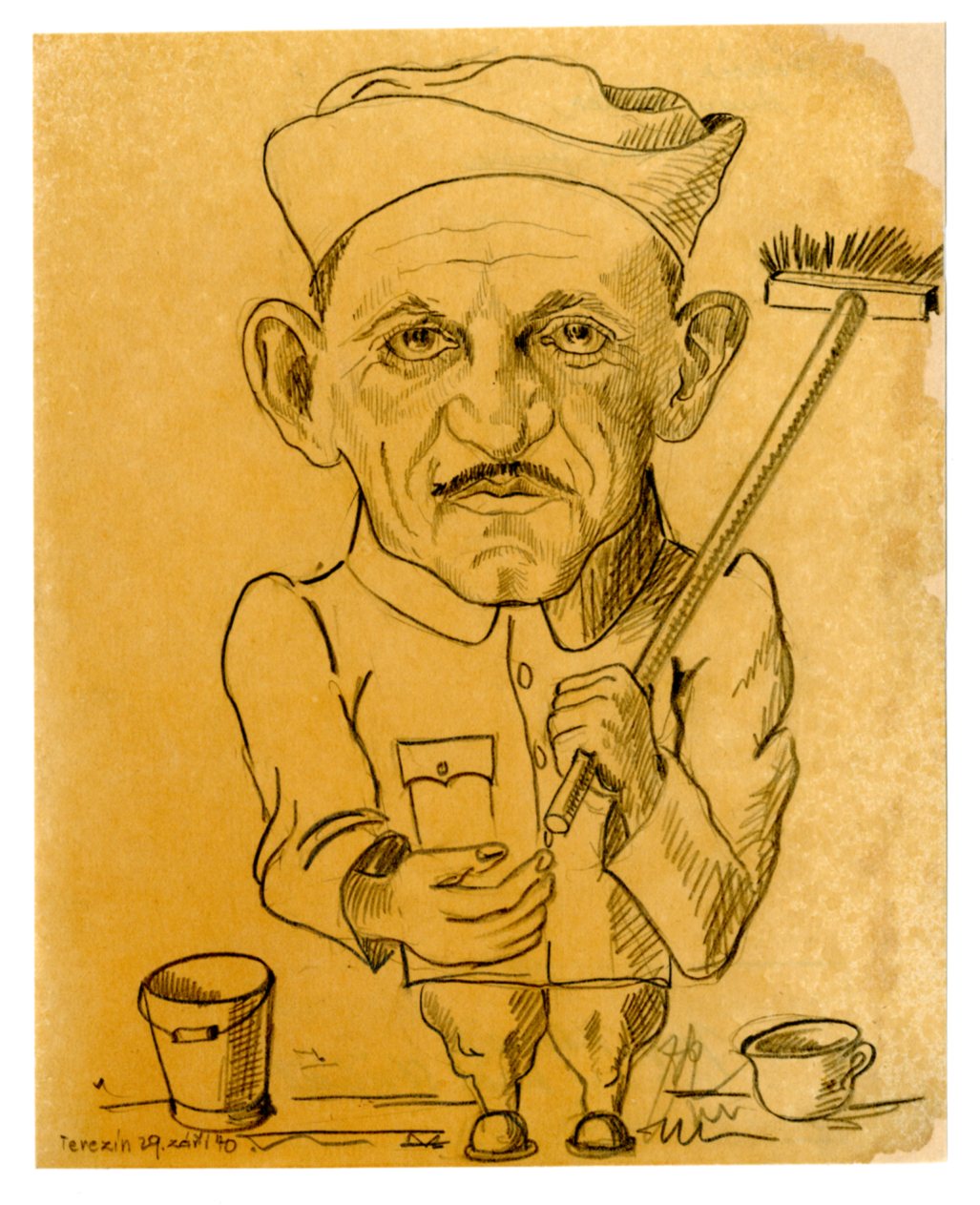
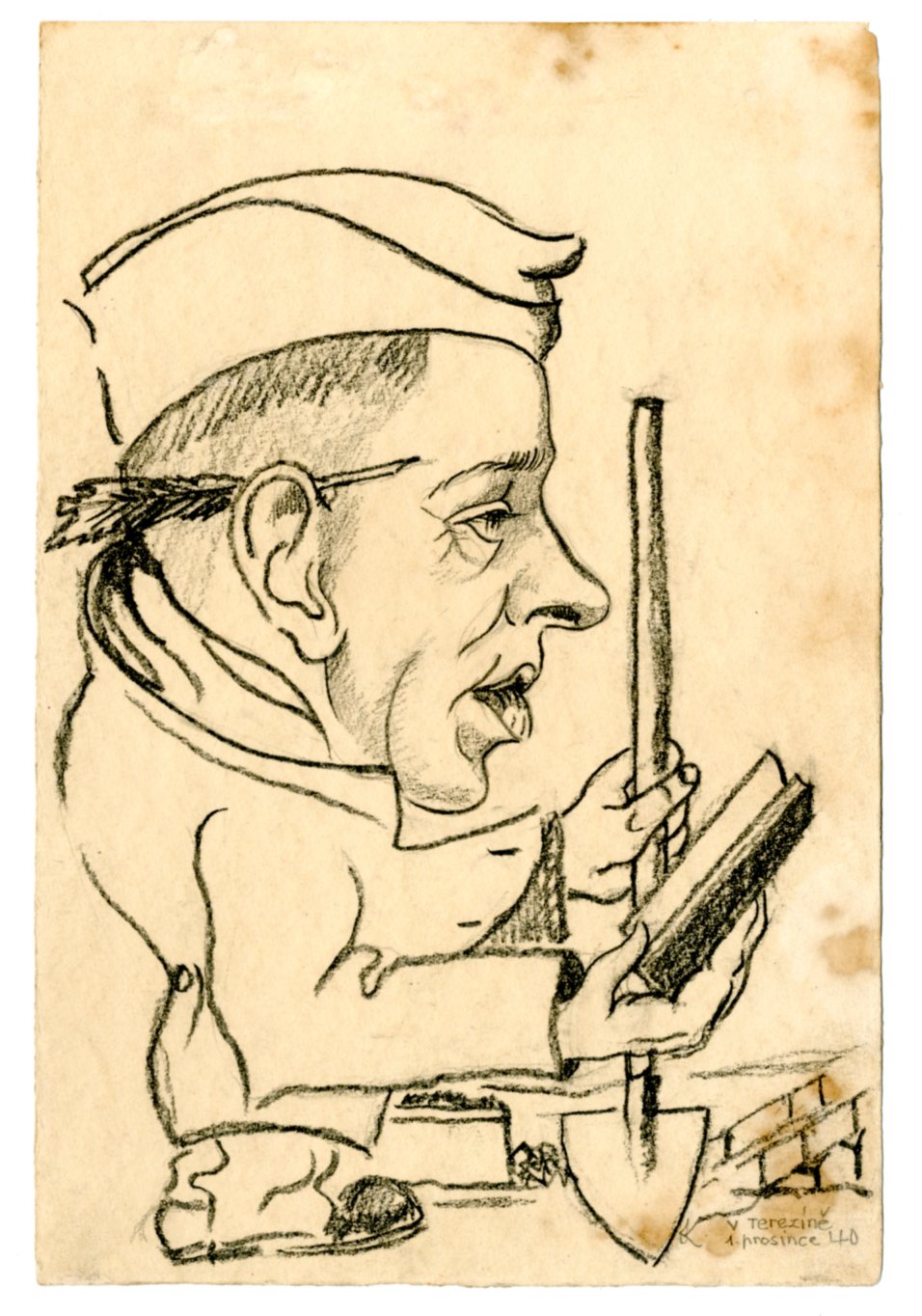
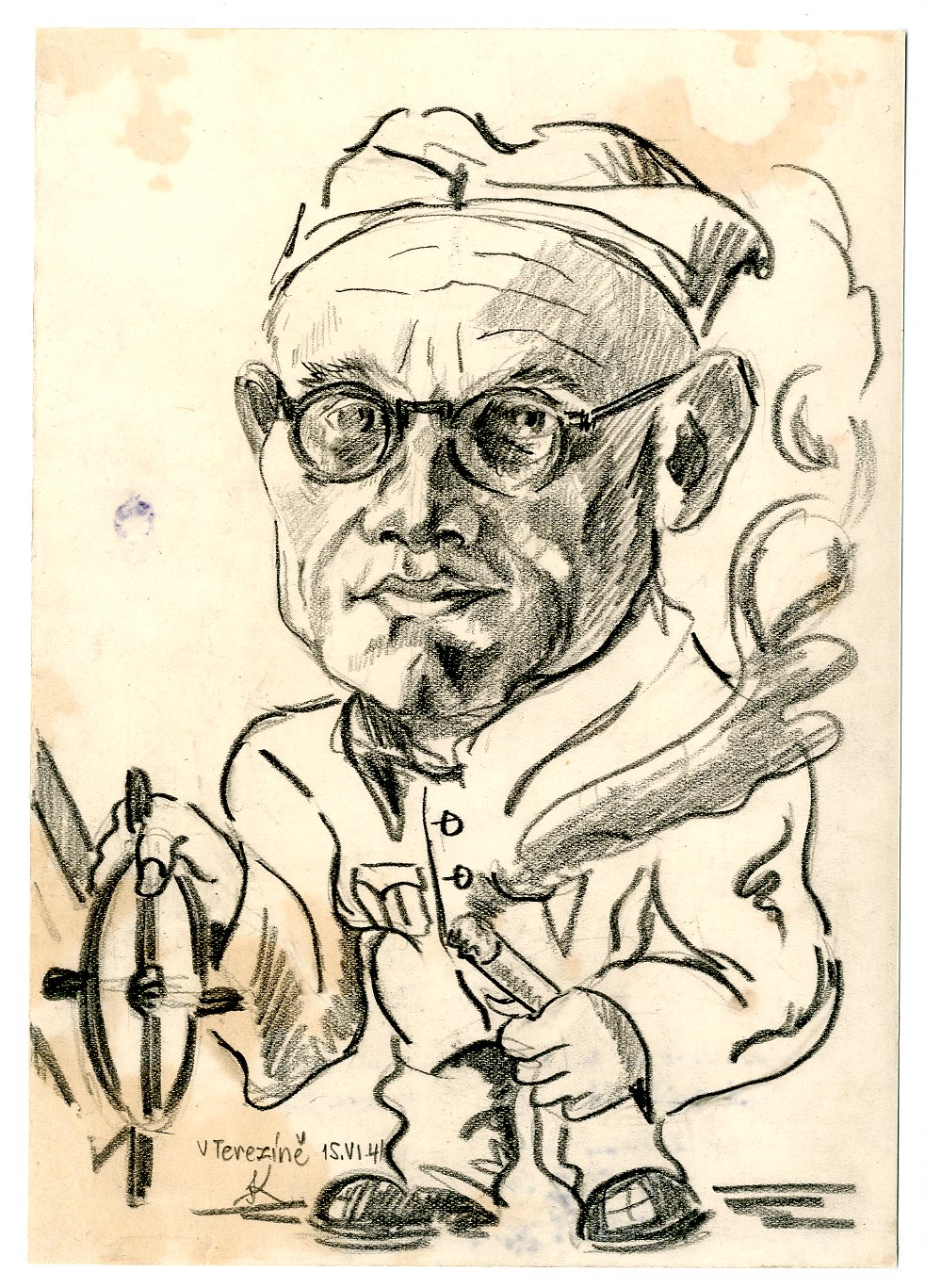
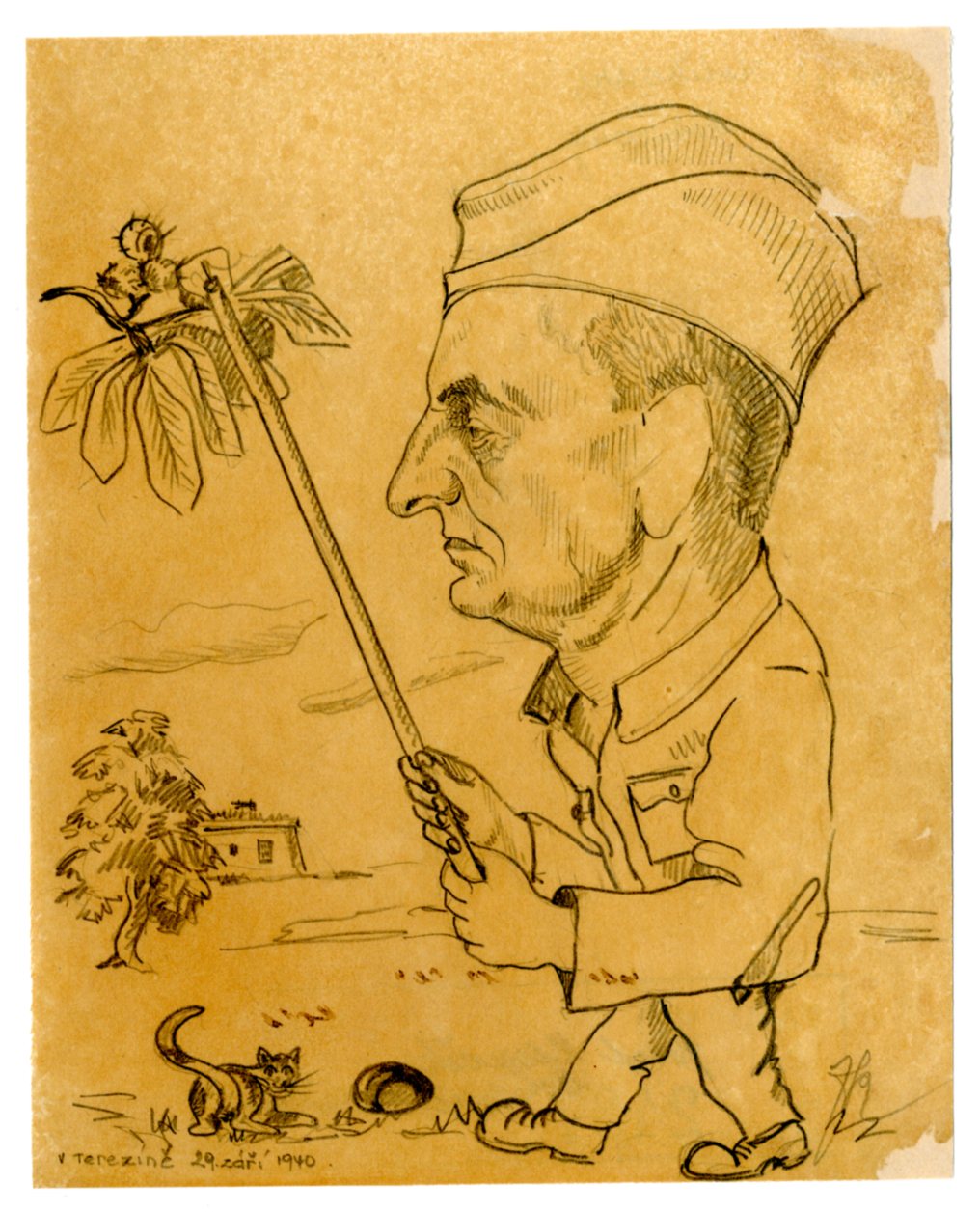
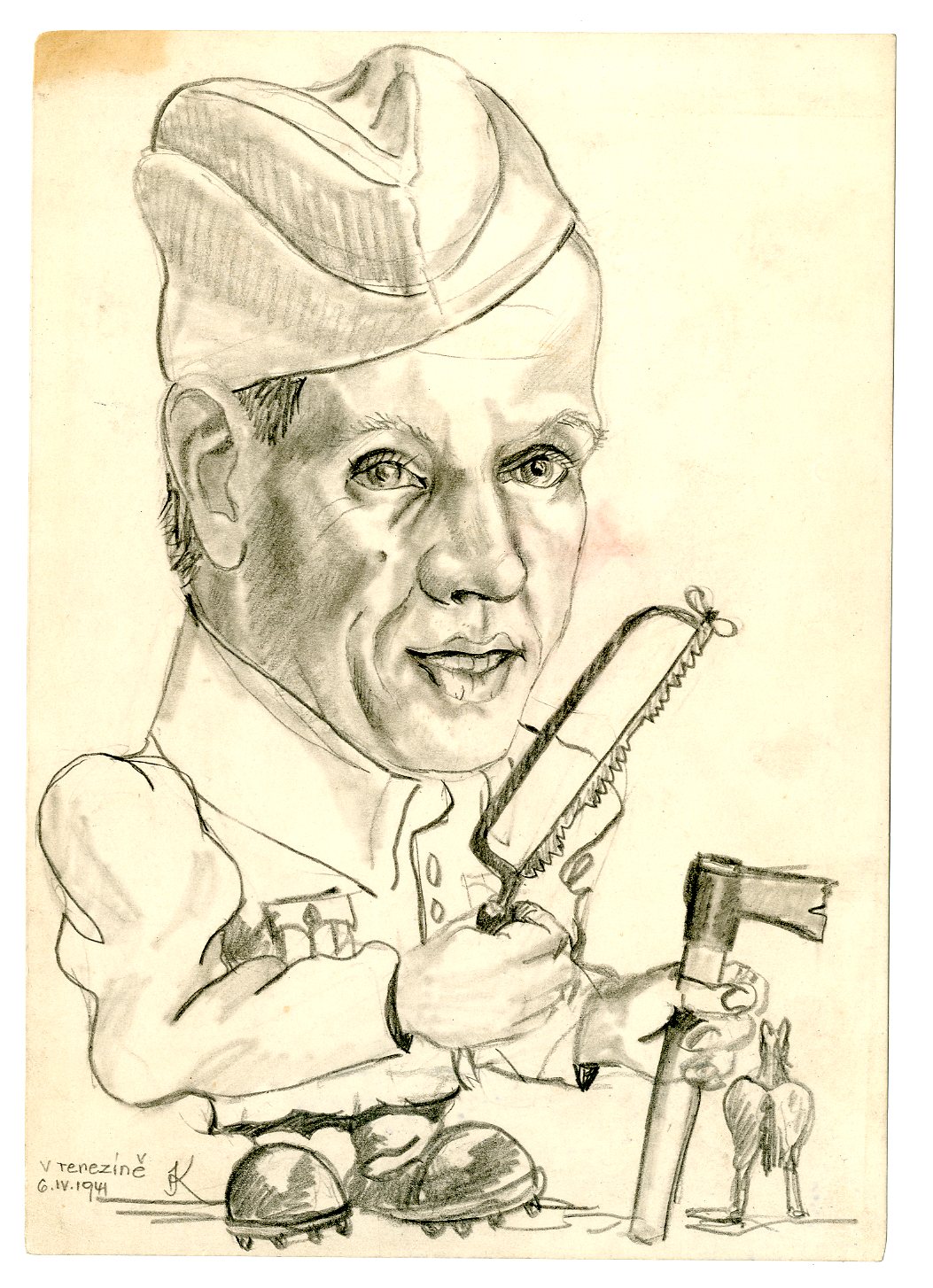
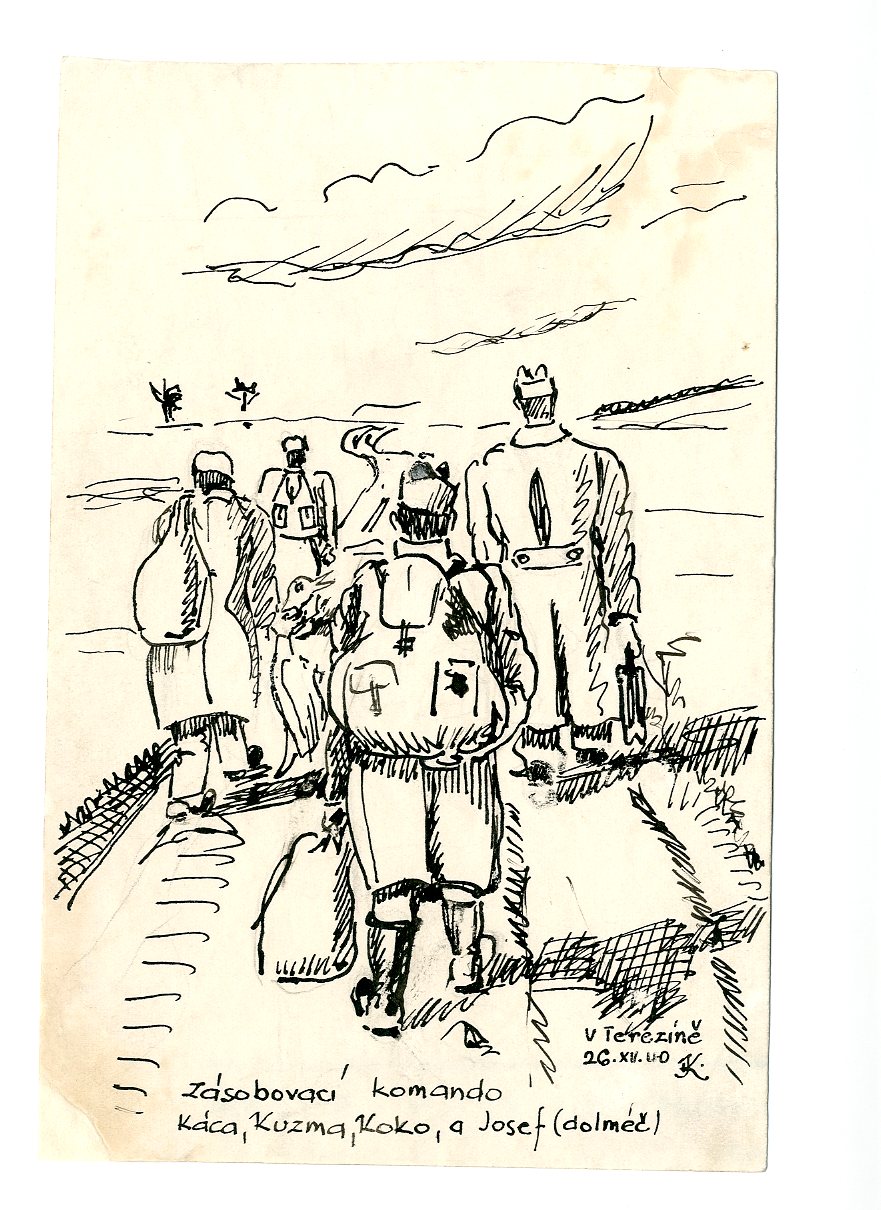
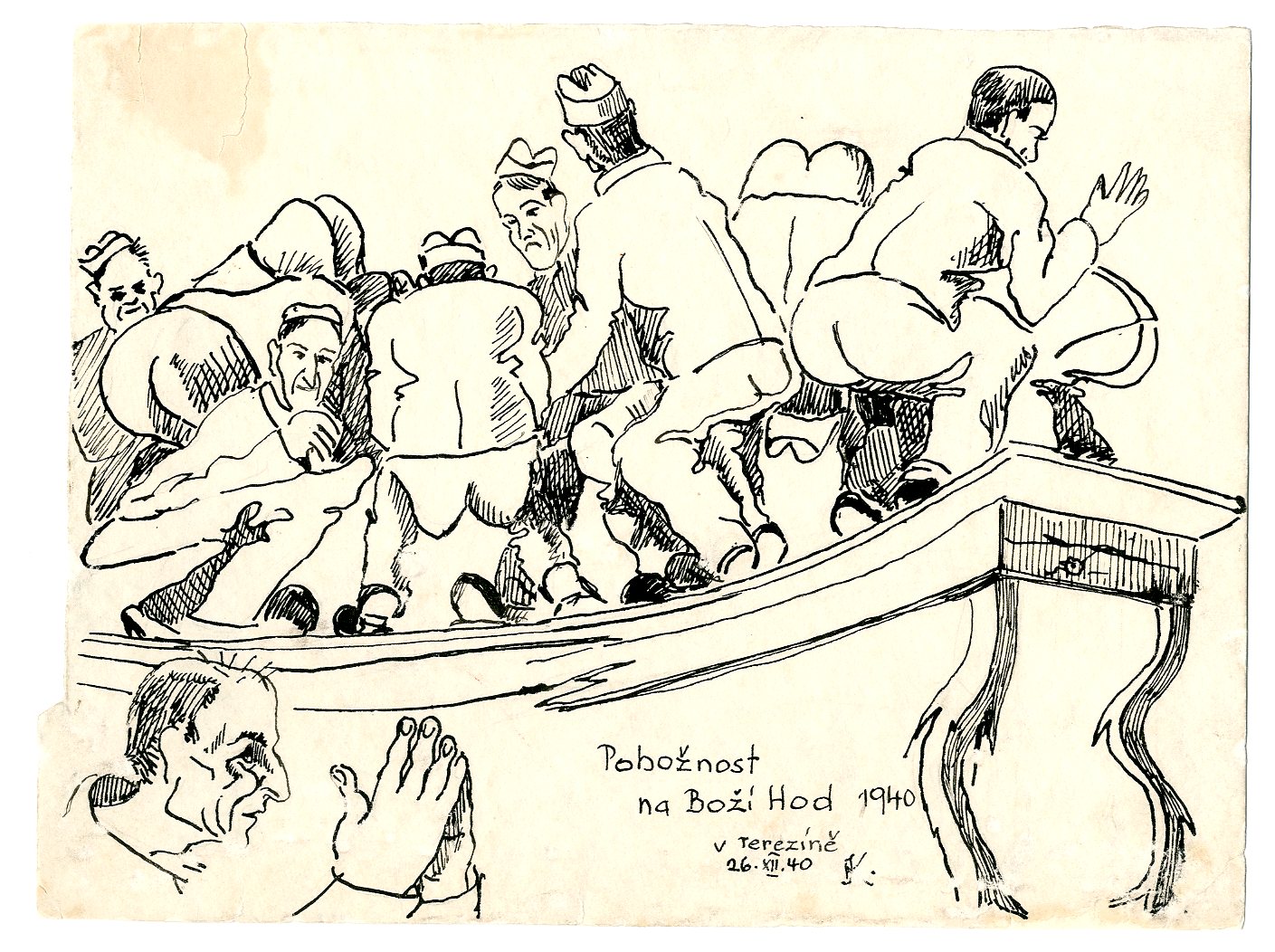
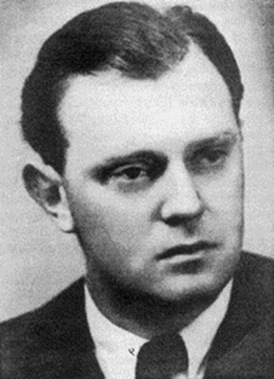
The Kladno Gestapo detained Josef Klouček in March 1940. He was initially kept and interrogated in its local Gestapo office before being sent to the Police Prison in the Small Fortress Terezín on July 3, 1940. Despite the harsh living conditions in prison, he made ample use of his artistic talents and secretly drew caricatures and portraits of his fellow inmates. He created witty and fitting caricatures or portraits capturing the salient features of the individual figures. Thanks to his work in the provisioning commando that travelled around the surrounding villages and brought food from the local farmers, Josef Klouček was able to smuggle his artworks out of the prison. These were then sent to the Czech families living in the nearby village of Travčice who then passed them on to the relatives of the inmates. Not surprisingly, Josef Klouček’s artistic talent was also noticed by the prison guards who had him paint landscapes and various still life scenes. At the order of Heinrich Jöckel (1899–1946), the Small Fortress commander, Klouček painted in 1940 the inscription ARBEIT MACHT FREI, known from the other German concentration camps, above the gate to the First Courtyard.
Josef Klouček was transported to the Gollnov prison in February 1941. His health slowly deteriorated due to hard labor, poor food and the harsh climate. In December 1942, he was moved to Dresden to stand trial. By that time, Klouček suffered from coughing fits. After being diagnosed with tuberculosis, he was taken to the prison hospital at Waldheim penitentiary, where he passed away on April 13, 1943. Today, his works of art are kept by the families of his former fellow prisoners, with a significant part of them being housed in the Terezín Memorial collection.